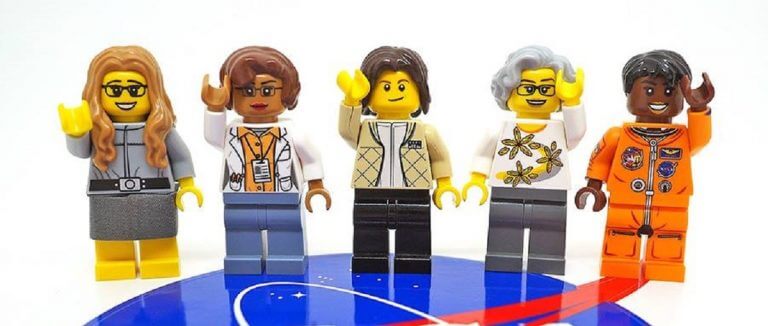
The new heroes in Lego town don’t wear capes or fly. Instead, they wear white lab coats or space suits.
And while they may not be able to fly, some have experienced zero gravity in space and were among the first to do so.
These heroes are the Women of NASA – the brainchild of Maia Steinlock, a deputy editor for Massachusetts Institute of Technology’s (MIT) news portal MIT News. And it was this idea that took top spot in Lego Dreams, the Dane giant’s contest to choose the best fan ideas to bring to life.
With the Women of NASA, the Brown University alum paid homage to space pioneers at the National Aeronautics and Space Administration (NASA), the celebrated American federal agency in charge of space research and exploration.
The five women space scientists are:
- Katherine Johnson, 98 – calculated and verified trajectories for the Mercury and Apollo programmes
- Margaret Hamilton, 80 – computer scientist who worked on the onboard flight software for the Apollo missions
- Mae Jemison, 60 – first African-American astronaut in space in a 1992 mission aboard the space shuttle Endeavour
- Nancy Grace Roman, 91 – astronomer known as the “Mother of Hubble” for her role in planning the Hubble Space Telescope
- The late Sally Ride, the first American woman in space in 1983
Thrilled to finally share: @LegoNASAWomen has passed the @LEGOIdeas Review and will soon be a real LEGO set! https://t.co/rcyjANsVD9 pic.twitter.com/b9OVx5UBaL
— Maia Weinstock (@20tauri) February 28, 2017
Once Lego is done with the design and sets its prices, a release date will be announced. This will likely be either late 2017 or early 2018, so Lego fans and science students worldwide can keep a lookout for it.
But while the news has delighted many, some have also brushed off the new venture as just another instance of Lego doing what it allegedly does best – capitalising on popular culture to sell toys. After all, Johnson was one of the lead stars in the Oscar-nominated film Hidden Figures.
In a world where only 26 percent of female students take up STEM subjects in colleges and universities and an even lesser percentage go on to STEM careers, Lego’s new faces are, at the very least, a small step in the right direction.
Even US President Donald Trump’s administration wants to walk the same path as Lego.
On Feb 28, Trump signed two bills aimed at encouraging women to build careers in STEM fields – the Inspiring the Next Space Pioneers, Innovators, Researchers, and Explorers (Inspire) Women Act and Promoting Women in Entrepreneurship Act.
The Inspire Women Act directs NASA to encourage women and girls to study in STEM fields and pursue careers in aerospace. The Bill gives NASA three months to submit a plan to Congress for how the agency can extend its outreach to K-12 female STEM students, specifically through current and retired astronauts, scientists, engineers, and innovators.
https://www.instagram.com/p/BQzJ-bSAiVz
The Promoting Women in Entrepreneurship Act authorises the National Science Foundation to “encourage its entrepreneurial programmes to recruit and support women to extend their focus beyond the laboratory and into the commercial world.”
While one may never know the true motive behind Lego and Trump’s latest STEM-friendly moves, one thing stands out as certain – far more spots in STEM jobs and courses need to be filled by women before a story about five women scientists being made into toy bricks becomes commonplace and no longer makes the news.
Liked this? Then you’ll love these…
University of Cambridge teams up with Lego to launch ‘professorship of play’
UK’s A-Level reforms could ‘undo’ efforts to encourage more women to pursue STEM subjects







